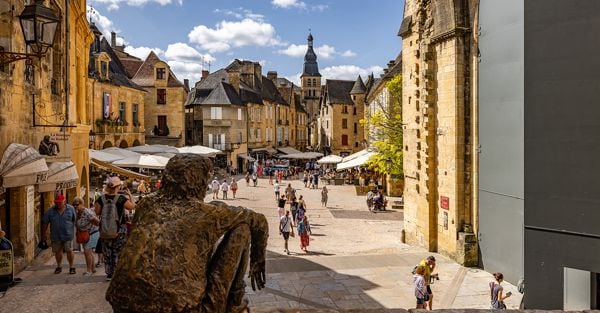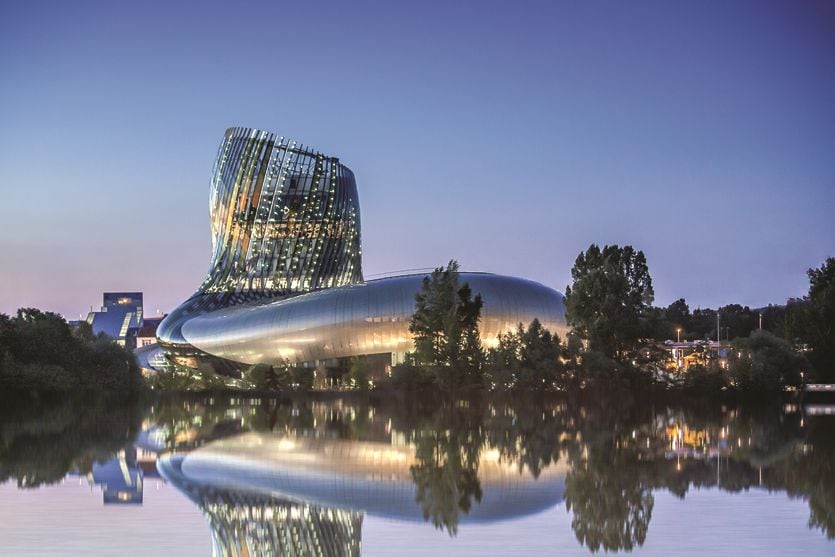All the beauty and variety of Nouvelle-Aquitaine

Wine tourism and gastronomy, but also culture and heritage, nature and legendary beaches thanks to 750 km of fine sandy coastline, with ports from Bayonne to La Rochelle, the Dune of Pilat that watches over the Arcachon basin from a height of 110 meters and the islands of Charente. Nouvelle-Aquitaine, the largest region in France with 84,038 km2, has so many holiday ideas to offer within its territory that to best propose them it had to divide them into eight major brands. In addition to Bordeaux, with its very famous Cité du Vin which is the fourth most requested destination in France, there are in fact seven other destinations to discover: Biarritz-Pays Basque, Cognac, Atlantic Coast, Limoges, Pyrénées, Dordogne Valley and Poitiers-Futuroscope-Marais Poitevin. For a 4 or 5 day itinerary, it is advisable to start from Bordeaux, well connected to Italy with flights from Milan, Florence, Venice, Rome, Naples or by train via Paris, which is a couple of hours away. For a gentle mobility, you can stop at Château de Malle and then continue towards the Dordogne and its castles.

For many, Bordeaux is synonymous with good wine. And in fact the city fascinates with its vineyards, but also with its architecture, gastronomy, a relaxed lifestyle marked by the art of living. A city that amazes with its exceptional historical and architectural heritage and surprises with its urban contrasts and regenerating landscapes. Throughout the year, the city invites its tourists to become protagonists of multiple experiences: a picnic on the Grande Randonnée trail, sharing moments of conviviality in one of the gourmet restaurants, taking a souvenir photo at the Miroir d'Eau, the magical and central fountain-mirror of water, meeting a winemaker - you are in the heart of the first organic vineyard in France - climbing to the top of the Pey Berland Tower, or exploring the city by bike. Wine has marked the life of the city for centuries, with the great merchants of the 18th century. Every June, Bordeaux hosts the Fête le Vin, a popular wine festival and culture event that offers visitors four days of tastings and meetings with the women and men of the wine world. From June 19 to 22, visitors are invited to visit the pavilions set up on the banks of the Garonne for convivial tasting stops and to meet the winemakers and traders representing the 80 appellations of Bordeaux and Nouvelle-Aquitaine. Cultural and musical events, a selection of local restaurants, a nightly drone show and beautiful sailing ships open to the public round out the 2025 “vintage” edition of the Fête. For a couple of exclusive addresses to stay at, stop at the Villa Foch, a 5-star boutique hotel, or the Mondrian Bordeaux Les Carmes, created by architect Philippe Starck in the historic Chartrons district. For unique culinary experiences, there is Le Chapon Fin, which this year celebrates 200 years of activity.

La Cité du vin (Copyright Axelferis)
With over 415,000 visitors in 2024, the Cité du Vin is the cultural visit not to be missed in Bordeaux. A unique cultural site, accessible to all, which presents the many facets of wine and its cultural and universal dimension. It is a small citadel entirely dedicated to wine, a journey into the world of vines and wines, from antiquity to the present day, across five continents. Through six universes divided into 18 modules, the permanent exhibition illustrates how wine, a universal heritage, has inspired people and shaped their lives and their land for millennia. Spread over 3,000 m², there are interactive, individual and collective, educational, immersive, dreamlike and multisensory experiences, with a permanent exhibition (available in 8 languages, including Italian), a spectacular Belvedere offering a full view of the city and a glass of wine to celebrate, as well as tasting workshops celebrating vineyards from all over the world. This year there are two events not to be missed: the new sensory path Via Sensoria (active until November 2nd) for a unique and sensorial tasting experience on the theme of the seasons and the free-access photography exhibition (open until September 28th) “In prima linea - Viticoltori di fronte al cambiamento clima”, dedicated to the work of photographer Michel Joly, strongly committed to protecting the environment and taking concrete actions for its protection.
Photogallery 24 photos
Château de Malle is a residence built from the 17th century onwards by Jacques de Malle, which was then inherited by his son, Pierre de Malle, advisor to King Louis XIV. Here, the nobility of great wines merges with that of art and architecture. The castle stands in the centre of 6.5 hectares of Florentine-inspired gardens, adorned with statues symbolising work in the vineyard and in wine, great figures from mythology and protagonists of the commedia dell'arte. But Château de Malle has also been a Grand Cru Classé since 1855. The Château de Malle vineyard is immersed in a green setting of 50 hectares and enjoys an optimal exposure, straddling two prestigious appellations: Graves and Sauternes. An impressive vineyard certified organic, which produces grand crus of exceptional quality, offering a diverse range of wines, including reds, whites, bubbles and Sauternes. Finally, the house is above all a family story: each generation has participated in its evolution. Since its creation, four centuries of family history continue to shape its soul. And the arrival of Luc and Clémence Planty in April 2024 is part of this continuity. Together, they are giving new impetus to the valorization of a great historical and wine-growing heritage. For the first time, the castle, gardens and vineyard are being opened to the public, offering a unique experience to families, lovers of culture and great wines.
Halfway between Bordeaux and Toulouse, in the Dordogne department, lies the Périgord, a magical corner of France. Here, quality of life, gastronomy and heritage are not just words: the Périgord Noir has managed to preserve its authenticity and conviviality in a region rich in know-how. Surrounded by two valleys classified as World Heritage Sites by UNESCO, the territory reveals treasures and secrets. The Vézère Valley, for example, is classified as a World Heritage Site for its prehistoric sites (143) including the most famous cave: Lascaux, famous throughout the world for its polychrome cave paintings. The Dordogne Valley and its 1001 castles are a perfect location for filming historical films and series and is classified as a biosphere reserve for the quality of its water, fauna and flora. Among the places to visit is Sarlat, with its market, famous for the films that were shot here and for a rich heritage that places it at the top of European cities. But the Périgord is also appreciated for its gastronomy, truffles, foie gras, walnuts, strawberries, and for its artisanal traditions - the Nontron knife that is found on the tables of the greatest French chefs was born here - and for the stories linked to wine and generations of winemakers committed to the Bergerac region. The Dordogne also offers innovative eco-sustainable accommodations for a wellness and slow regeneration experience, in luxury bungalows with Spa, capable of combining luxury and nature. Among the addresses for a stay, there is the Hotel de Pavie (5 stars of the Relais & Châteaux circuit) or, in the middle of the vineyards, Châteaux Hotel Grand Barrail (also 5 stars) in Saint-Emilion, or the 4-star Le Vieux Logis in Trémolat.
ilsole24ore





